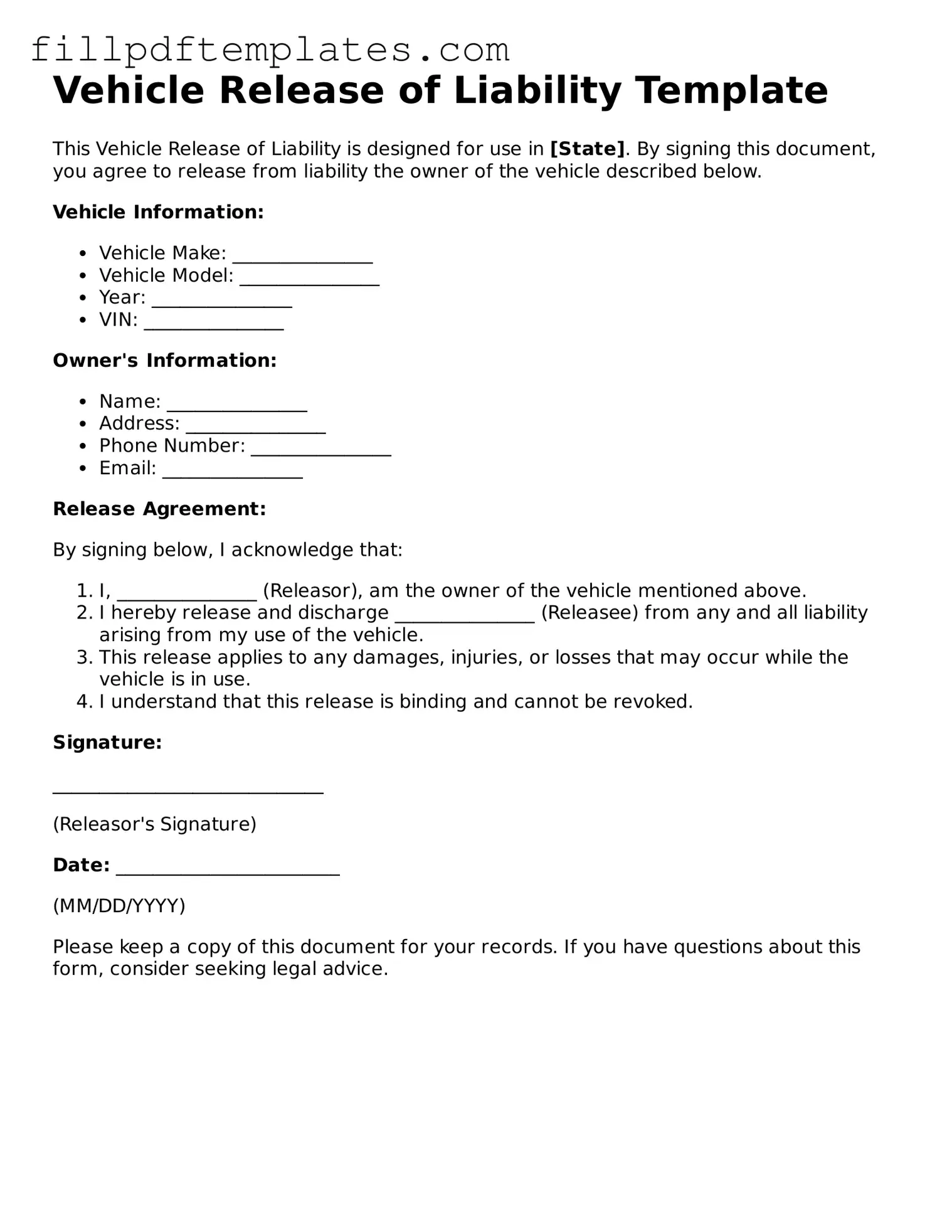Vehicle Release of Liability Template
This Vehicle Release of Liability is designed for use in [State]. By signing this document, you agree to release from liability the owner of the vehicle described below.
Vehicle Information:
- Vehicle Make: _______________
- Vehicle Model: _______________
- Year: _______________
- VIN: _______________
Owner's Information:
- Name: _______________
- Address: _______________
- Phone Number: _______________
- Email: _______________
Release Agreement:
By signing below, I acknowledge that:
- I, _______________ (Releasor), am the owner of the vehicle mentioned above.
- I hereby release and discharge _______________ (Releasee) from any and all liability arising from my use of the vehicle.
- This release applies to any damages, injuries, or losses that may occur while the vehicle is in use.
- I understand that this release is binding and cannot be revoked.
Signature:
_____________________________
(Releasor's Signature)
Date: ________________________
(MM/DD/YYYY)
Please keep a copy of this document for your records. If you have questions about this form, consider seeking legal advice.
